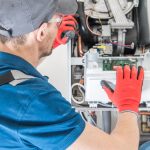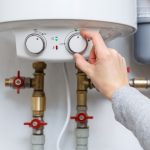
SuperGreen Savings: How a Heat Pump Can Lower Your Energy Bills
When energy costs climb and weather grows less predictable, homeowners start looking for upgrades that deliver comfort and real, measurable savings. Among all the options on the table, few technologies work as hard—and as efficiently—as a modern heat pump. In this guide from Super Green HVAC, we’ll unpack how heat pumps work, where the biggest heat pump savings come from, how to size and run your system for peak results, and what to expect during a professional install. Along the way, you’ll get practical checklists, Canadian resources, and clear examples so you can forecast your own heat pump savings with confidence.
Super Green HVAC has completed thousands of successful projects, from compact condos to multi-storey homes. We’ve seen consistent, repeatable heat pump savings when systems are sized correctly, installed carefully, and tuned to real-world usage. If you’re weighing your options, this guide will show you how to turn potential into performance—and how to make those heat pump savings show up on your monthly bills.
Why Heat Pumps Win on Efficiency
How heat pumps move heat instead of making it
Traditional electric resistance heat turns electricity directly into heat—convenient but costly. Heat pumps work differently: they transfer heat from one place to another. Because they move heat rather than generate it, they can deliver two to three (or more) units of heat for every unit of electricity they use. That multiplier is the foundation of typical heat pump savings.
COP and HSPF: The numbers behind lower bills
COP (Coefficient of Performance): Instant snapshot of efficiency. A COP of 3 means one kilowatt-hour in, ~3 kilowatt-hours of heat out, underpinning significant heat pump savings in moderate conditions.
HSPF / HSPF2 (Heating Season Performance Factor): Seasonal measure of heating efficiency. Higher is better and typically correlates with stronger heat pump savings in Canadian climates.
SEER / SEER2: Seasonal cooling efficiency rating. Better cooling efficiency contributes to summer heat pump cost savings, especially during humid heat waves.
Variable capacity = variable bills (in a good way)
Inverter-driven compressors ramp output up or down to match your home’s load precisely. That steadier, right-sized operation reduces short cycling, improving comfort and extending equipment life—while expanding your heat pump savings margin over time.
Where the Biggest Savings Come From
1) Replacing expensive fuels
If you currently heat with electric baseboards, oil, or propane, you’re sitting on the largest potential heat pump cost savings. Heat pumps can cut winter electricity consumption dramatically versus resistance heat, and they can reduce oil/propane use to near-zero in shoulder seasons.
2) Smarter shoulder-season strategy
Fall and spring present the perfect window to maximize heat pump cost savings. Let the heat pump carry nearly all the load while your backup system idles, saving your most expensive fuel for rare deep-freeze events.
3) Zonal control and right-sized comfort
Ductless heads or zoned ducted systems let you dial in temperature where you actually live. Less conditioning in spare rooms and more precision in high-use spaces equal targeted heat pump cost savings without sacrificing comfort.
4) Quiet, continuous operation
Longer, lower-speed runs quietly trim peaks and valleys, improving humidity control and airflow distribution. That stable comfort profile boosts perceived warmth—and translates into real heat pump savings because you won’t reach for higher setpoints to chase drafts.
How to Estimate Your Own Heat Pump Savings
Step-by-step forecasting
- Collect last year’s bills. Note energy usage by month for electricity and any delivered fuels.
- Separate heating energy. Compare winter vs. summer baseline to estimate what went to heating.
- Apply reasonable performance assumptions. Use HSPF/HSPF2 from shortlisted equipment and local weather data to translate into expected heat pump savings.
- Add cooling improvements. Higher SEER generally reduces summer consumption, stacking more heat pump cost savings across the year.
- Factor in your home’s envelope. Better air sealing and insulation broaden your heat pump savings and let the system operate at its most efficient speeds.
Tools and trustworthy info
For neutral guidance on efficiency and planning, review:
- Natural Resources Canada – Energy Efficiency for Homes
- Save on Energy (Ontario) – Home programs and tips
These references help you sanity-check claims and understand how design choices influence heat pump cost savings.
Cold Climate? You Can Still Save
Cold-climate models and backup strategies
Today’s cold-climate units maintain strong output at sub-zero temperatures. A good design sets an economic balance point—below which a secondary heat source may step in—to preserve comfort while locking in heat pump savings through most of the season.
Defrost cycles demystified
When outdoor coils frost up, the system briefly reverses to melt ice. Proper sizing and setup minimize any comfort dip, so defrost has little impact on overall heat pump cost savings across the season.
House Types and Retrofit Paths
Ducted homes
If you already have ducts in good condition, a central heat pump can leverage existing distribution. Correct static pressure and return air sizing are crucial to ensure you realize projected heat pump savings.
Ductless and hybrid layouts
Add ductless heads where ducts don’t reach or where you want zoned control. This staged approach often yields excellent heat pump savings, especially in open-concept main floors and primary suites.
Radiators and baseboards
Electrically heated homes gain some of the largest heat pump savings by replacing baseboards with ductless heads or a ducted mini-air handler—no full-duct overhaul required.
Maximizing Performance After Installation
Thermostat strategy
Let the system cruise. Frequent manual overrides force higher speeds and reduce heat pump savings. Program realistic setpoints and use gradual setbacks, if any.
Airflow and filtration
Clean filters and correct fan speeds protect efficiency. A clogged filter raises static pressure, making the system work harder and shrinking heat pump cost savings.
Annual tune-ups
A quick pre-season visit checks refrigerant charge, coil cleanliness, and controls. Small corrections preserve year-over-year heat pump savings and extend equipment life.
The Hidden Multiplier: Envelope Upgrades
Air sealing
Plugging leaks in rim joists, top plates, and around penetrations lowers your heating load. That lets the heat pump idle at its most efficient speeds, amplifying heat pump savings.
Insulation and windows
Improved R-values and tighter windows stabilize indoor temps and reduce drafts. The steadier the load, the bigger your realized heat pump savings.
11 Everyday Habits That Boost Heat Pump Savings
- Keep interior doors open for better circulation.
- Use bath and kitchen exhaust fans sparingly in winter to retain heat.
- Shade west-facing windows in summer to reduce cooling load.
- Replace or wash filters on schedule—set calendar reminders.
- Vacuum return grilles monthly to reduce dust.
- Don’t block indoor heads or supply registers with furniture.
- Set modest setbacks; avoid big swings that chew up heat pump savings.
- Use ceiling fans on low to improve perceived comfort.
- Fix door sweeps and weatherstripping before cold snaps.
- Close blinds on winter nights to reduce radiant losses.
- Schedule an annual tune-up to protect year-to-year heat pump cost savings.
The Money Conversation: Upfront Cost vs. Lifetime Savings
Total cost of ownership beats sticker price
A lower-priced, poorly installed system can cost more to operate for 10–15 years, eroding heat pump savings. Precision design and commissioning create predictable comfort and predictable costs.
Incentives and financing
Rebates and low-interest programs can reduce upfront burden and bring heat pump savings forward. Ask Super Green HVAC to model simple payback and net-present value so you can compare options clearly.
Commissioning: The Difference Between “Installed” and “Optimized”
What proper commissioning includes
- Verified refrigerant charge by manufacturer method
- Airflow measurement and static pressure targets
- Controls calibration and setpoint testing
- Balanced distribution (ducted) or correct fan/vanes (ductless)
Without commissioning data, projected heat pump savings are guesses. With it, you lock in performance from day one.
Common Myths That Shrink Real-World Savings
“Bigger is better”
Oversizing causes short cycling, humidity problems, and lost heat pump savings. Right-sizing matches the load for steady, efficient operation.
“Setback like a furnace”
Deep setbacks push the system to higher speeds to catch up, often trimming heat pump savings. Gentle, consistent settings win.
“Any installer will do”
Heat pumps reward craftsmanship. Poor line set work, missed evacuations, and sloppy controls setup can erase expected heat pump savings for years.
How Savings Show Up
Electrically heated condo
Two ductless heads replace baseboards in main living areas. Even without touching the bedrooms, annual heat pump savings are substantial because the highest-use rooms shift to high-efficiency heating.
Two-storey detached home
A ducted central system handles most of the load; a small auxiliary heater covers rare cold snaps. Stable comfort and measured heat pump savings arrive the first winter.
Heritage home with partial ducts
A hybrid solution—one ductless head for the living area and a small ducted air handler upstairs—balances comfort and budget while achieving strong heat pump savings.
Why Choose Super Green HVAC
Heat pumps aren’t just “plug and play.” They reward careful design and attentive service. Super Green HVAC specializes in right-sized systems that turn projected heat pump savings into real results you can see on your bills.
What sets us apart
- Load-first design: We perform room-by-room calculations and airflow mapping before we recommend equipment.
- Flawless refrigerant practices: Proper evacuation, pressure testing, and moisture control protect efficiency—and your heat pump savings.
- Commissioning you can keep: We share airflow, charge, and control data so you know the system is dialed in.
- Education and follow-through: We teach everyday habits that compound heat pump savings, then back you up with responsive support.
From the first walkthrough to the first winter storm, our process turns potential heat pump savings into dependable comfort.
Operation & Maintenance: Keeping Savings on Track
Seasonal checklist
- Spring: Clean outdoor coil, verify drain paths, and confirm cooling setpoints.
- Fall: Inspect filters, check refrigerant and controls, and confirm heating profiles that maximize heat pump savings.
- Mid-season: Keep vegetation trimmed and evaporator coils clear for unrestricted airflow.
When to call us
Unusual noises, persistent error codes, or a sudden spike in usage are your cues to schedule a tune-up. Prompt attention protects both comfort and heat pump savings.
The Envelope + Heat Pump “Flywheel”
Done together, smart envelope upgrades and a tuned heat pump create a positive feedback loop. Lower loads mean the compressor coasts more often; the quieter, steadier operation improves comfort; and you enjoy bigger, more reliable heat pump savings year after year.
Bringing It All Together
Modern equipment, careful design, and simple habits can transform how your home feels—and what you pay for it. Whether you’re swapping out baseboards, retiring an older AC and furnace for an all-electric system, or adding zoned comfort, the path to dependable heat pump savings is straightforward: right-size the system, install and commission it carefully, and operate it consistently.
Ready to quantify your own heat pump savings? Book a no-pressure assessment with Super Green HVAC. We’ll measure your load, model options, and show you a clear side-by-side of costs, comfort, and projected heat pump cost savings—so you can decide with confidence.
Frequently Asked Questions (FAQs)
1) How do I estimate my heat pump savings before I commit?
Start with last year’s utility data, separate out the heating portion, and apply the rated HSPF/HSPF2 from shortlisted models. Super Green HVAC can model your home to project heat pump savings in dollars and kilowatt-hours.
2) Do cold-climate models actually deliver heat pump savings in Canadian winters?
Yes. With proper sizing and an economic balance point, cold-climate systems provide strong output in sub-zero temps. Most homes see significant heat pump savings across the entire season.
3) Will a ducted system or ductless heads give me better heat pump cost savings?
It depends on your layout and ducts. Ductless shines for zoned spaces and electrically heated homes, while ducted systems are ideal where ducts are healthy. We compare both pathways to maximize heat pump savings for your home.
4) Can smart thermostats increase heat pump savings?
Used correctly, yes. Gentle setpoints, modest setbacks, and schedule automation help the system run steadily—boosting heat pump cost savings without sacrificing comfort.
5) How much maintenance is needed to preserve heat pump savings?
Minimal but important: clean filters, clear coils, and annual tune-ups. These basics maintain airflow and charge, protecting long-term heat pump savings.
6) What if I keep my existing furnace as backup—will I still see heat pump savings?
Absolutely. Let the heat pump handle most hours, and the furnace only kick in during extreme cold. This hybrid approach delivers strong heat pump savings while maintaining resilience.
7) Are there incentives that improve payback on heat pump savings?
Often yes. Programs may offset equipment and installation costs, bringing heat pump savings forward. We’ll help you identify eligible incentives and include them in your payback analysis.
Want a printable checklist that outlines design, installation, and operating steps to lock in your heat pump savings? Ask us—we’ll send a one-page quick-start that fits right on your fridge.


